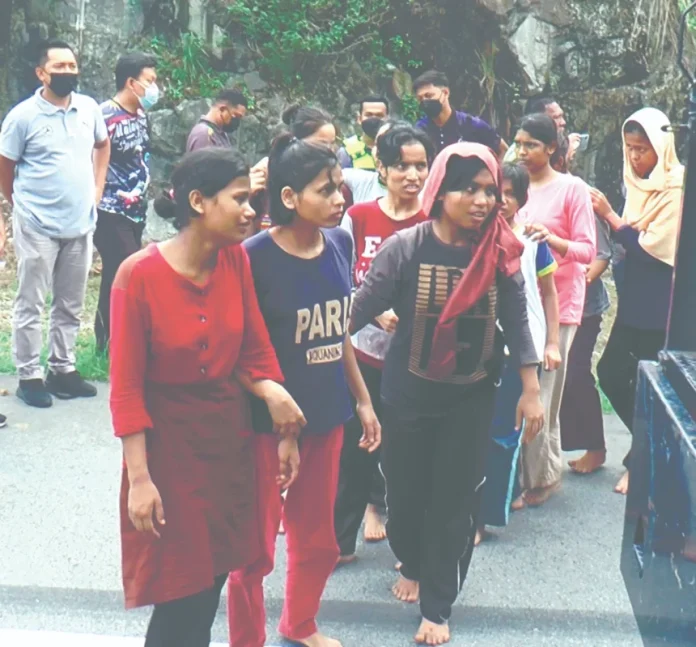Victims recount being seized in Myanmar and forced through regional trafficking routes for extortion
PETALING JAYA: Rohingya families in Malaysia are believed to be systematically targeted as “ransom banks” by regional trafficking syndicates, with victims abducted in Myanmar and brutalised until relatives here pay for their release, a community source has revealed.
Speaking to theSun on condition of anonymity, the source said many Rohingya never intended to come to Malaysia but were forced through a trafficking chain cutting across Myanmar, Bangladesh, Thailand, Malaysia and Indonesia.
He said victims are snatched from rural villages, taken to holding sites across the Myanmar–Thailand border and tortured while being made to call relatives in Malaysia or Thailand for money.
“If the family cannot pay, they are beaten or worse. Some families are asked for money several times.”
He claimed survivors, who are now in Malaysia, have given near-identical accounts of being detained in Myawaddy, a border town long identified by researchers as a major regional trafficking hub.
“The stories are similar. They were taken from their villages, kept in camps and tortured until money was sent. Many did not choose Malaysia – they were sent here because traffickers have contacts along the route,” he said.
He added that many captives were later forced onto boats without knowing where they were being taken to, leaving them at the mercy of monsoon seas and deadly capsizes.
“People don’t get on those boats because they think Malaysia will give them an easy life. Many say they were moved by force or paid everything they had just for a chance at safety.
“If the violence at home doesn’t stop, people will keep running. And traffickers will keep taking advantage. Victims need protection and traffickers need to be stopped,” he said.
Universiti Kebangsaan Malaysia migration scholar Dr Aizat Khairi said trafficking routes into Malaysia have become far more fragmented, with smugglers exploiting both maritime and land gaps.
“Since 2022, we’re seeing a dual pattern. The sea route into Langkawi and Kedah has surged again – especially during monsoon seasons – while the old land corridors through southern Thailand never disappeared,” he told theSun.
He said 2024 findings from the United Nations Office on Drugs and Crime show Rohingya and Bangladeshis are moved in segments handled by different brokers, not through a single continuous journey.
“Some are taken to Ranong or Songkhla, others through Takua Pa and many are forced through forests before crossing into Perlis. Ransom demands overwhelmingly target relatives in Malaysia. The journey is designed around where money can be collected.”
Universiti Teknologi Mara border-security expert Dr Mohd Ramlan Mohd Arshad said the survivors’ stories reflect trafficking trends that have repeatedly appeared in enforcement investigations
He said Thailand has long been a “consistent checkpoint”, with victims moved from Myanmar to southern Thailand before being channelled into Malaysia.
“Malaysia is rarely the starting point, but very often the endpoint. Families, job contacts and Rohingya communities are here, so traffickers know the ransom can be collected here.”
Ramlan said while Myawaddy often functions as an upstream staging area, most smuggling that affects Malaysia occurs later in the chain, once victims reach southern Thailand.
“In many cases, payments don’t just go to one party. There are transporters, middlemen and cross-border agents. Each layer takes a cut and that’s why the cost can reach around RM15,000 per person. Families end up paying in stages throughout the journey and many remain in debt for years even after arriving in Malaysia.”








